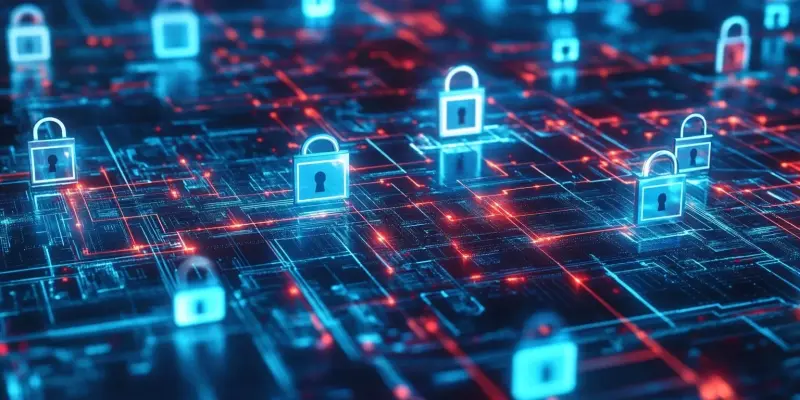As the interconnected digital world continues to evolve, cybersecurity threats have grown in frequency and sophistication, demanding robust and proactive measures from nations globally. Japan, renowned for its technological advancements and critical industrial sectors, is no exception to this growing dilemma. In response to continual cybersecurity threats, the Japanese government introduced the Active Cyber Defense Bill. This legislation aims to enhance Japan’s cyber-response capabilities to match the standards of its Western allies, particularly the United States. It marks a significant shift towards a more aggressive and anticipatory cyber defense strategy.
Proactive Defense Strategy: A New Beginning
Steps Towards Proactive Cyber Defense
Japan’s shift towards proactive cyber defense is not without its specific legislative frameworks designed to counteract imminent cyber threats effectively. Following a critical assessment by former US Director of National Intelligence Dennis C. Blair in April 2022, Japan’s cybersecurity inadequacies were starkly revealed. Blair’s critique, known colloquially as “Blair Shock,” served as the catalyst for a comprehensive reevaluation of Japan’s cyber defense mechanisms.
In December 2022, the Japanese government introduced a new National Security Strategy, embedding the concept of “active” cyber defense. This strategy underscores the importance of identifying and neutralizing cyber threats in their nascent stages, thus preventing potential damages to national security and critical infrastructures. The Active Cyber Defense Bill, therefore, represents a legislative response designed to address these pressing vulnerabilities by incorporating both passive and active measures.
Passive measures, an integral component of the legislation, involve forming a cybersecurity council and establishing a committee for information analysis. These steps ensure that cybersecurity incidents are diligently reported by critical infrastructure providers. Moreover, the bill grants new powers to the prime minister’s office for data collection, although these powers are subject to specific privacy restrictions to balance security and civil liberties. These passive measures form the backbone of the legislation, emphasizing preparation and information sharing as key tools in defense.
Controversial yet Necessary Active Measures
While passive measures are foundational, the active measures proposed in the bill signify a more assertive approach. The active measures permit the military to not only protect its systems but also those linked to the US military presence within Japan. This collaboration underscores the importance of allied forces in maintaining regional security. Additionally, the bill introduces “cyber harm prevention officers” tasked with proactively countering significant cyber threats. These officers possess the authority to disable enemy servers during incidents without needing immediate approval from oversight bodies.
This proactive element, while essential, has not been without controversy. Critics have likened it to “vigilante hacking,” raising ethical and legal concerns about the potential misuse of such powers. However, proponents argue that in the dynamic landscape of cybersecurity, swift and decisive action is often necessary to mitigate threats effectively. The ability to neutralize threats at their source prevents broader impacts on national security and critical infrastructures. This element exemplifies Japan’s commitment to enhancing its resilience against modern cyber threats, albeit through measures that provoke intense debate.
Enhancing Resilience Against Cyber Threats
Japan’s Geopolitical Context and Cybersecurity
Japan’s revised cybersecurity stance must also be understood within its broader geopolitical context. Nestled in a region marked by complex diplomatic relations and strategic imperatives, Japan faces persistent cybersecurity threats, including state-sponsored attacks from neighboring countries like China. These threats target both government and industrial sectors, seeking to exploit vulnerabilities and disrupt critical infrastructures. Given this precarious situation, the move towards a robust and preemptive defense framework becomes an indispensable aspect of Japan’s national security strategy.
Japan’s advanced industrial sectors are particularly susceptible to cyberattacks, with adversaries targeting sensitive data and critical systems. By introducing a proactive defense strategy, the government aims to shield these vital sectors from potential disruptions. The legislative measures proposed seek to create a resilient cyber environment that can withstand the evolving threat landscape. It reflects a decisive shift towards adopting more forceful measures to protect national interests and maintain stability in the face of concerted cyber threats.
Future Implications and Strategic Cyber Security
As our digital world grows increasingly interconnected, cybersecurity threats have become more frequent and sophisticated. This demands strong and proactive measures from nations around the globe. Japan, famed for its technological progress and crucial industrial sectors, faces this mounting challenge as well. To combat ongoing cybersecurity threats, the Japanese government has introduced the Active Cyber Defense Bill. This piece of legislation is designed to bolster Japan’s cyber-response capabilities, aligning them with the high standards set by its Western allies, most notably the United States. The bill signifies a major shift towards a more assertive and preemptive cyber defense strategy. This proactive approach underscores Japan’s commitment to protecting its digital infrastructure and national security. By adopting such measures, Japan aims to safeguard its technological advancements and critical industries from potential cyber threats, ensuring resilience in an increasingly digital and vulnerable world. In essence, this marks a new era for Japan, emphasizing stronger defense mechanisms in the cyber sphere.

